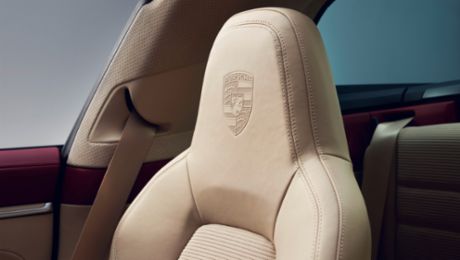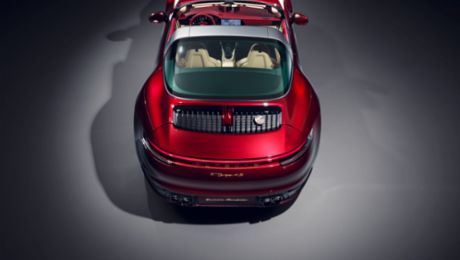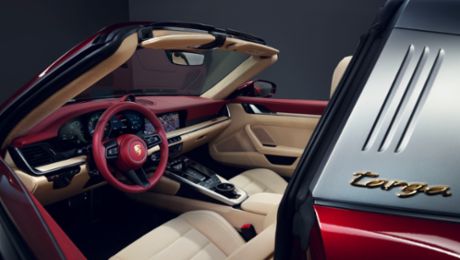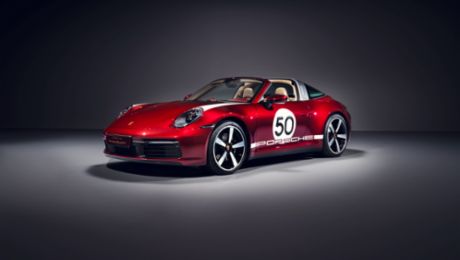The faces of the wide spokes and the rim flange are polished and thereby stand out against the black-painted rim and black sides of the spokes. The wheels are designed in the shape of a wing, or cloverleaf, and are reminiscent of the legendary Fuchs wheels that were first used on the 1967 Model Year Porsche 911 S.
The Fuchs wheel: the cloverleaf-design first forged wheel
When first released, Porsche simply referred to these rims as alloy wheels, which were part of the sports car’s standard equipment. The designation of the aluminium wheel is modest, but it reflects a logical idea, which was that the new Porsche 911 S was to have lighter wheels than the series-production 911 in order to reduce unsprung mass. The specification for this more powerful version of the 911 demanded that its wheels weigh around 6.5 lbs less than their steel equivalents.
This was initially an insoluble challenge for traditionally produced cast aluminium wheels, which were just as unable to withstand loads as wheels made of several parts. The contradiction could only be resolved thanks to an innovation by Otto Fuchs KG, an alloy foundry in Meinerzhagen in the Sauerland region of Germany, who were able to supply a wheel that was light, yet able to meet every requirement. The company implemented a new production process for this purpose, in which the blank was forged from one piece while the complete rim area from outer to inner horn was rolled.
The ALMgSi1 aluminium alloy used is 97 percent aluminium, supplemented by magnesium, silicon, manganese, titanium and other ingredients – a formula that is still valid today.
The original design of the wheel, with connecting webs that taper to a point, was created in May 1965. However, Ferdinand Alexander Porsche modified the wheel in favour of a more harmonious appearance. The minutes of the meeting note the following: “Contrary to our proposal, Mr. Porsche Jr. had changed the shape of the five connecting webs between hub and rim for style and visual reasons. While our design was well adapted to the contours of the discontinued series-production vehicles, the shape developed by Mr. Porsche Jr. appears more harmonious on the new vehicle".
Porsche Classic: classic Fuchs wheels are still available
The wheels of the 911 Targa 4S Heritage Design Edition are available for all current 911 models as part of the Porsche Exclusive Manufaktur range. However, almost all variants of the classic Fuchs wheel are also available for historic Porsche models as the wheel designed by F. A. Porsche is part of the Porsche Classic product range.
Since meeting the high standards of quality and safety of Porsche is the top priority, the wheels are subjected to extensive testing at the Porsche Development Centre in Weissach.
An example of these stringent test requirements for Porsche original spare parts is that the wheel trims featuring embossed and colored Porsche Crests from the "Porsche special request programme" of the 1980s passed the cross-cut test with flying colors.
In this test, a cut is made in the wheel trim down to the base material, so that a grid-like pattern is created onto which a standardized adhesive tape is stuck, pressed on and then removed in a predefined period of time and at a specific angle. This test is designed to demonstrate the high quality of the Porsche Classic hub cap, as there is no peeling or flaking of the surface, and means that the wheel center is ready to face the next 30 years.
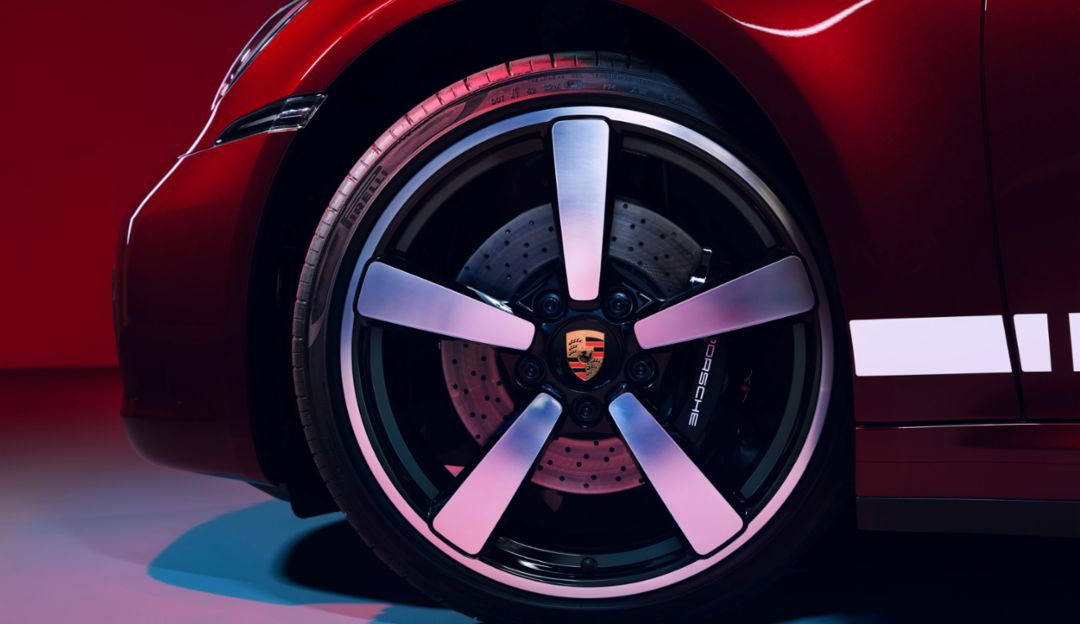
-2.jpg/jcr:content/Porsche%20911%20S%202,0%20Targa%20(1967)%202.jpg)

